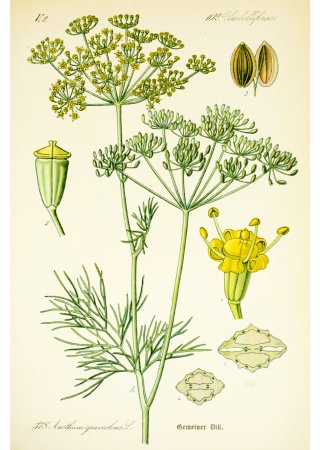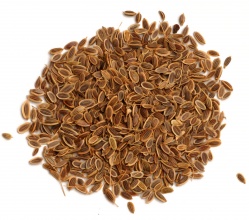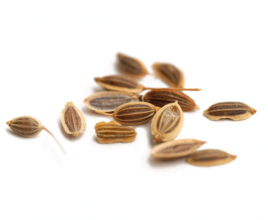Dill
- …dill is a favorite folk remedy, because its seeds are said to have an overall calming effect and aid digestion?
- …liquid leached from dill seeds is an ingredient in strengthening baths and provides nutrients for nail growth?
- …dill tastes somewhat like caraway and anise, and is slightly bitter?
- …all parts of the dill plant are useable except the roots?
- …dill is an essential ingredient in herb vinegars?
- …dill seeds are good with almost any kind of fish?
- …dill is an effective preventative against heart attacks, lowers blood pressure, suppresses coughing and has favorable effects on the circulatory system?
- …dill as a spice consists of fresh or dried leaves and whole or ground seeds of the Anethum graveolens plant?
Tarator (Bulgarian Cucumber Soup)
1 l sour milk (or plain yogurt)
1 large cucumber
2 cloves garlic
4 tablespoons ground walnuts
1 tablespoon oil
4 tablespoons dill, salt
Cut peeled cucumber into small cubes. Add whipped sour milk or yogurt, thin with water as necessary. Add salt, garlic, dill and oil. This cold soup is served chilled, sprinkled with ground walnuts.
In ancient Rome, dill was a symbol of life energy, and gladiators rubbed their muscles with it before combat, while for the Greeks, it was a hiccup remedy. In medieval times it was believed to protect against witchcraft and magic, although dill itself was an ingredient in many magic potions. It was also believed to be an aphrodisiac, and so women added dill to men's wine, to boost their passion and endurance. It came to central Europe across the Alps during the time of Charlemagne, probably together with fennel and anise.



